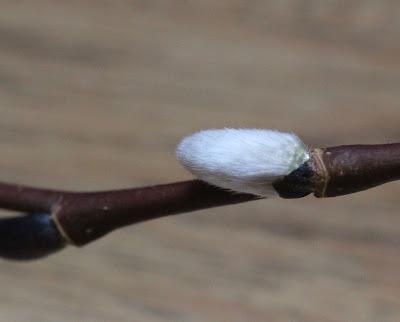
My circle of close friends includes two trees. This may seem odd, but it’s impossible to follow a tree for a year without become friends! It was Lucy Corrander who started these relationships, when she invited anyone with an interest to choose and follow a tree, and report on it monthly. That was several years ago. We haven’t quit. Now the gatherings are kindly hosted by the Squirrelbasket (read the latest news here).Last month I announced I would follow a juneberry in 2016, once I found one. So far, snowy weather has limited my search. An excursion to potential habitat in Vedauwoo Glen was unsuccessful, but still fun.

We had the picnic area all to ourselves!
So for this month, I’m reporting on my old friends.
Old friends Sparky and the cottonwood tree (preparing to estimate height).
The cottonwood I followed in 2014 grows on the bank of the Laramie River, just a short walk from my house. I see it almost daily. I never did decide if it’s one tree or several (multiple trunks) nor its exact identity. At least one of its parents must have been a narrowleaf cottonwood (Populus lanceolata), but maybe this is a hybrid, with genes of the Plains cottonwood (P. deltoides). The hybrid is common in this part of the Rocky Mountains—common enough in fact to have a name: lanceleaf cottonwood (P. X acuminata). Backcrossing has produced everything in between, most frequently narrowleaf X lanceleaf. In other words … it’s a taxonomic mess.Even in the middle of winter, I make my daily trek through the cottonwood forest along the river … as I did this morning to see how the tree was doing. Walking through the snow and bare trees, I think about the trappers who spent the winter there in 1831-32. They grew fat on bison, elk, deer and pronghorn antelope, but their horses wouldn’t eat the inner bark of these cottonwoods and so starved. The men realized too late that they had camped in the wrong kind of cottonwoods—the bark of narrowleafs (and the hybrids) is bitter.
I switched to black-and-white; it was that kind of day.

Old and new friends (Emmie in foreground).

Lots of buds up high, waiting patiently. Only three more months ...

At the base of the trunks is a secluded spot where elves and fairies gather.
The shredded plastic bag that was caught on a high branch in 2014 is gone. But now someone has flagged this tree. What does it mean? A university student’s study?
Last year I stumbled upon a willow growing in a nook in the wall of a small limestone canyon, shaded by junipers. I was surprised to find it in that dry rocky canyon. Furthermore, it was blooming—on February 23, in Wyoming, at 7200 feet elevation! I had to follow this tree and learn more.

Male pussy willow in bloom; February 23, 2015.
The silvery catkins emerging from the dark buds revealed it to be an American pussy willow (Salix discolor), specifically a male. These willows are famous for blooming very early. When I returned from vacation in late May, it had leafed out. Then in July I discovered how it survives. After a hard rain, a waterfall was cascading down the wall behind the willow. The pool at the base stayed almost a month, long after the waterfall was gone. This site is not as dry as it looks!
Pool at base (July 2015), possibly a swimming hole for elves and fairies!
The willow isn't as convenient to visit as the cottonwood. I have to drive across town, and walk about a half mile. And now it’s cold, snowy and windy. Who wants to walk in 30 mph winds?! But the sun is shining! But it’s cold! But the willow might be blooming! … that decided it.
Looking up Willow Canyon .
Hoping to see wild flowers in February, I crossed the snowy prairie, turned towards Willow Canyon, and post-holed through snow up the draw to the willow. There I found …





When male pussy willow catkins (flower clusters) first emerge, they are silky and suggestive of cats’ feet.

Male pussy willow flowers (lower right) have several stamens, a nectary, and a bract with long silky hairs.Britton and Brown 1913 (via USDA Plants Database).
Tree-following ... let's do it!

